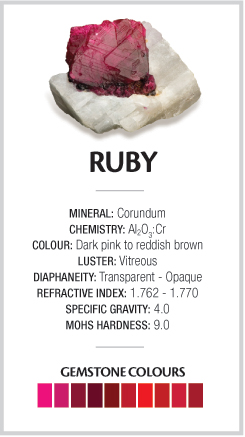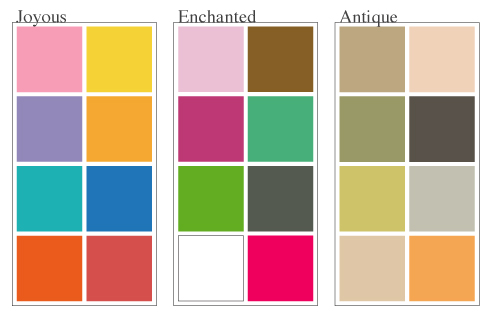 Vibrant and glowing like a hot ember, the ancients considered the ruby to be the most powerful and magnificent gem of all. Throughout much of recorded history rubies have been prized above all other gems. Like emeralds, quality rubies of rich colour, few inclusions, and good clarity are exceedingly rare. Size is a relative term in the world of gems. An average size for a ruby is actually smaller than the average size associated with most other gemstones. At auctions large rubies of uniform red colour have sold for more than flawless diamonds.
Vibrant and glowing like a hot ember, the ancients considered the ruby to be the most powerful and magnificent gem of all. Throughout much of recorded history rubies have been prized above all other gems. Like emeralds, quality rubies of rich colour, few inclusions, and good clarity are exceedingly rare. Size is a relative term in the world of gems. An average size for a ruby is actually smaller than the average size associated with most other gemstones. At auctions large rubies of uniform red colour have sold for more than flawless diamonds.
“A clear, transparent, and faultless ruby of a uniform red color is at the present time the most valuable precious stone known.” Max Bauer – 1894.
 Timeless beauties
Timeless beauties
The name Ruby comes from the Latin “rubinus” meaning red. It was called ratnaraj (sanskrit) meaning “the king of gems” in ancient India. Ancient cultures in Eastern Asia described the ruby as “a drop of the heart’s blood of Mother Earth.”
Rubies have been used to represent the sun in may cultures, they were believed to bring prosperity and banish sadness. In prehistoric eastern cultures the ruby was worn to shield warriors from enemy strikes. The ancient Burmese were know to implant rubies under warriors skin to make them invulnerable, and bring them valor in battle. As a talisman across the ages it’s been worn to protect against danger, and ward off sickness and disease. The gems were occasionally ground up into a medicinal power and placed on the tongue. This was done to treat indigestion, stop bleeding, cure blood diseases and heart ailments.
Ancient Hindus divided rubies into classes: lower, middle and upper class. They were categorized by clarity and colour. The highest quality vibrant red stones being upper class, and the lighter pink stones being lower class. It was not permitted for the different classes of ruby to touch one another, be worn together, or stored together. There was a very similar classification system used in Mandarin China, where a persons rank was determined by the size and colour quality of their ruby, usually worn in a ring. It is said that the Chinese Emperor Kublai Khan offered a entire city in exchange for a large vibrant ruby.

The photos above feature fine ruby ‘silk’. Under a microscope these inclusions and bubbles can be seen. These ‘flaws’ give rubies their unique character.
A corundum of any other colour
Corundum is a mineral of aluminum oxide with traces of iron, titanium and chromium. Gems formed in this rock comes in a rainbow of colours including black and white (colourless). All colours of corundum except red are sapphires. For a corundum gemstone to officially be classified as a ruby it has to have a specific saturation of red (chromium). In the U.S. a ruby must be a deep pink otherwise it’s called a pink sapphire. A typical ruby is deep pink to violet red, but ‘pigeons blood’ red rubies are the most prized and sought after.
Spinel is another gemstones (not a corundum) that occurs in shades of red and pink. They can be found with deposits of ruby and often misidentified. A few famous historic rubies have turned out to be red spinels like the Black Prince’s Ruby from the Imperial State Crown (United Kingdom).
Ruby silk
Natural rubies have inclusions or impurities that are very important in categorizing the quality and determining whether the stone is natural, heat treated or synthetic. These “flaws” or rutile needles are referred to as silk since they look like tiny silk threads within the stone.
Most rubies are treated to enhance their colour and reduce the appearance of inclusions. The highest quality stones with the best colour are found in Burma, Thailand, and Sri Lanka.



